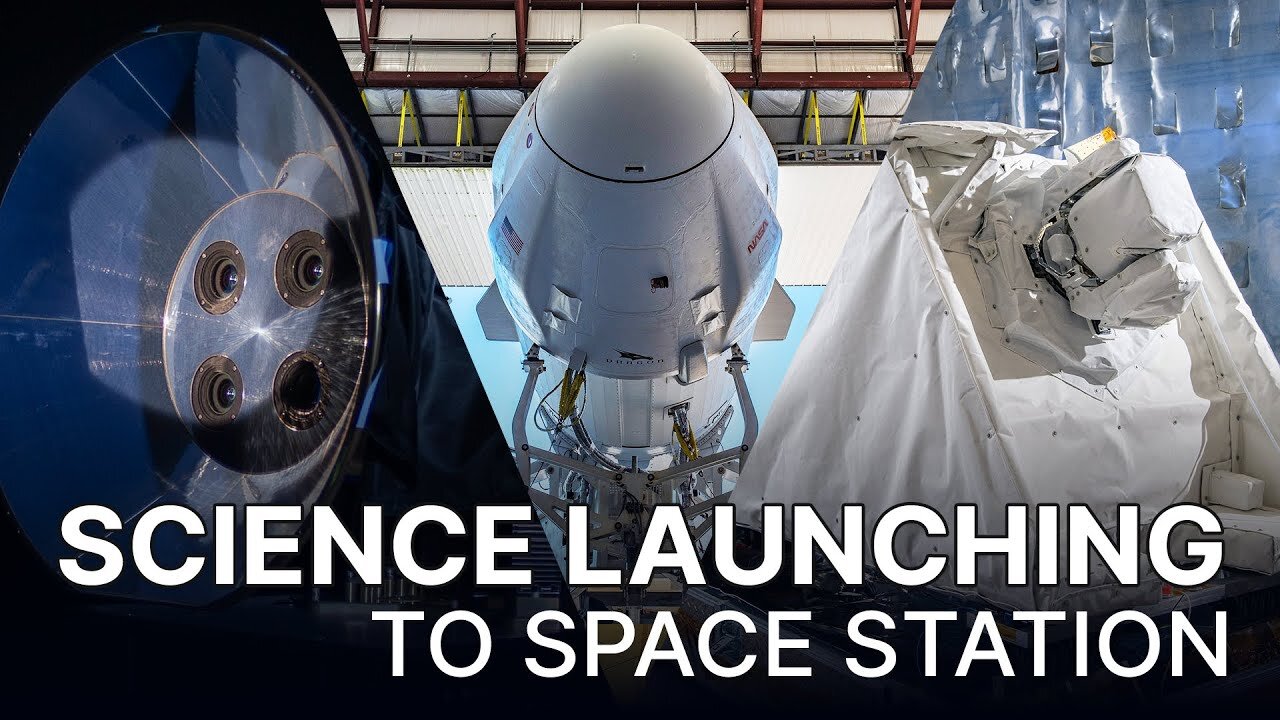Premium Only Content

Science Launching on SpaceXs 29th Cargo Resupply Mission to the Space Station
Launching cargo resupply missions to the International Space Station (ISS) is a routine operation conducted by space agencies and commercial companies. These missions are essential for maintaining the station's functionality and supporting the needs of the astronauts on board.
Here are some key points about such missions:
1. Purpose: Cargo resupply missions are launched to deliver essential supplies, equipment, and experiments to the astronauts on the ISS. This includes food, water, scientific instruments, spare parts, and various research payloads.
2. Space Agencies and Companies: Multiple organizations are involved in these missions. NASA, the Russian space agency Roscosmos, the European Space Agency (ESA), the Japan Aerospace Exploration Agency (JAXA), and private companies like SpaceX and Northrop Grumman are among the entities that participate in these missions.
3. Launch Vehicles: Various rockets are used to launch cargo resupply missions, such as the SpaceX Falcon 9, Northrop Grumman Antares, and Russian Soyuz and Progress spacecraft.
4. Cargo Delivery: The cargo is typically housed in specialized spacecraft, like the SpaceX Dragon, Northrop Grumman Cygnus, or Russian Progress spacecraft. These vehicles are designed to safely transport cargo to the ISS and can be either crewed or uncrewed.
5. Frequency: Cargo resupply missions are launched regularly, with missions occurring several times per year. The specific frequency depends on the needs of the ISS and the capabilities of the participating space agencies and companies.
6. International Collaboration: The ISS is a collaborative project involving multiple countries and space agencies. Cooperation is key to ensuring the station's continuous operation and success.
7. Research and Experiments: In addition to delivering supplies, these missions also support scientific research. The cargo often includes experiments that astronauts conduct in the unique microgravity environment of the ISS.
8. Return Cargo: These missions also bring back scientific samples and experiments from the ISS to be analyzed on Earth.
9. Maintenance: Sometimes, cargo missions include equipment and spare parts needed for station maintenance and repairs.
The specific details of a cargo resupply mission, including the launch date, payload, and participants, can vary from one mission to another. To get the most up-to-date information on a specific cargo resupply mission, you can check the websites and announcements of the space agencies and companies involved, such as NASA or SpaceX.
-
 1:11:24
1:11:24
LFA TV
12 hours agoENERGY WEDNESDAY: Markets Adjusting to Nuclear Threat | WORLD HD 11.20.24 @8am EST
12.6K3 -
 1:13:23
1:13:23
Game On!
12 hours ago $1.79 earnedOregon IN, Colorado OUT! CFB Playoff Committee makes a statement with latest rankings!
19.9K3 -
 1:00:54
1:00:54
PMG
1 day ago $3.50 earned"Biden just allowed Ukraine to Attack Russia!!"
12.5K3 -
 15:52
15:52
Degenerate Jay
22 hours ago $19.19 earnedThe Joker 2 Cast Knew The Movie Was Bad?
71.1K21 -
 3:01
3:01
MoneyMindsTrading
15 hours ago $9.69 earned#1 Day Trader on Rumble : NVIDIA EARNINGS 🚀
70.3K6 -
 3:13:12
3:13:12
Price of Reason
18 hours agoDisney CEO Bob Iger PANICS after Trump win? Is Landman any good? The Game Awards Announces Nominees!
85K22 -
 2:51:40
2:51:40
Jerry After Dark
18 hours ago3 Point Contest | Presented By Ghost Energy
161K6 -
 2:24:56
2:24:56
Kim Iversen
15 hours agoRussia Threatens To NUKE Ukraine | RFK Jr Called Science’s True Voice By Former CDC Chief
140K329 -
 1:16:12
1:16:12
Savanah Hernandez
13 hours agoCorrupt Democrats attempt to stop Trump’s plan to fix America
123K97 -
 53:12
53:12
Glenn Greenwald
15 hours agoImprisoned For Journalism: Jeremy Loffredo On His Detention In Israel, Censorship & More | SYSTEM UPDATE #368
138K121